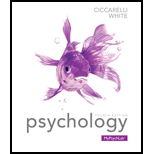
Introduction:
Personality disorder differs from other psychological disorders, this disorder does not influence a person’s life, and however, it affects adjustment of the entire life of a person. Personality disorder is not always for an entire lifetime. In personality disorder a person adopts rigid, persistent, and maladaptive patterns of behaviors, which interfere by general social interactions.
According to the DSM-5 list there are 10 primary types of these disorders that come under three categories: people in first category are seen as eccentric or odd with others, people in second category behave very dramatically, emotional or erratically and people in third category have anxiety or fearfulness is present as the main emotion. All three categories can be labeled as: Cluster A, Cluster B, and Cluster C.
Want to see the full answer?
Check out a sample textbook solution
Chapter 14 Solutions
Psychology (paperback) (4th Edition)
- What should the role of a school counselor be as it applies to Section 504 of the Rehabilitation Act of 1973? Write in a narrative format and include in the in-text citations of the following source: “American School Counselor Association. (2024). The school counselor and Section 504 plan and process. https://www.schoolcounselor.org/Standards-Positions/Position-Statements/ASCA-Position-Statements/The-School-Counselor-and-Section-504-Plan-and-Proc “arrow_forwardWhat role do you think social media has on the occurrence of domestic violencearrow_forwardcan you help make a factor ANOVA on SPSS the data I need is the age, ethnicity and all 8 questions which are 1.How likely are you to adopt new trends or practices that are considered unconventional or unorthodox in your culture or society? 2.To what extent do you feel the need to be different or unique in your choices, behaviors, or appearance? 3. How often do you find yourself drawn to subcultures or groups that reject mainstream values? 4. How important is it for you to express your individuality, even when it means going against social or cultural expectations? 5. To what degree do you enjoy challenging social norms or questioning authority figures? 6.How Important is it to you to be different or unique in your choices, behaviors, or appearance? 7. How often do you engage in behaviors or make choices that are perceived as unconventional or rebellious? 8. How comfortable are you with being judged or criticized for your nontraditional beliefs or actions?arrow_forward
- I need help making a spss box plot using the data age, gender, ethnicity, and person 1 to person 20 https://docs.google.com/spreadsheets/d/1V582jSoi5i4-jfxGxmS4O6kydNtWbMFIDNJ1u7RfpPk/edit?usp=sharingarrow_forwardOut of these questions, which of these questions would match with the predictor: one preference for nonconformity predicator 2 social influence, environmental effects? questions 1. How likely are you to adopt new trends or practices considered unconventional or unorthodox in your culture or society? 2. To what extent do you feel the need to be different or unique in your choices, behaviors, or appearance? 3. How often do you find yourself drawn to subcultures or groups that reject mainstream values? 4. How important is it for you to express your individuality, even when it means going against social or cultural expectations? 5. To what degree do you enjoy challenging social norms or questioning authority figures? 6.How Important is it to you to be different or unique in your choices, behaviors, or appearance? 7.How often do you engage in behaviors or make choices that are perceived as unconventional or rebellious? 8.arrow_forwardI need help doing an SPSS box blot on age, gender, and people 1 through people 20arrow_forward
- Gough creative personality scale share your observations regarding how it felt to take the inventory, and whether you think it captures the concepts it is attempting to measure.arrow_forwardMiddle Childhood is the period between 7 years old and 11 years old. Middle childhood can be a difficult time for children and parents to navigate. “Dear Abby” used to be an advice column where people would write in and ask for help with various situations/problems in their life. A modern day slightly similar equivalent would be Reddit’s popular thread including a NSFW term. Your task is to identify two “problems/dilemmas” caregivers of a child in middle childhood may encounter and give advice based on the research in child development. This is not just your opinion; this needs to be backed up with empirical evidence.arrow_forwardMiddle Childhood is the period between 7 years old and 11 years old. Middle childhood can be a difficult time for children and parents to navigate. “Dear Abby” used to be an advice column where people would write in and ask for help with various situations/problems in their life. A modern day slightly similar equivalent would be Reddit’s popular thread including a NSFW term. Your task is to identify two “problems/dilemmas” caregivers of a child in middle childhood may encounter and give advice based on the research in child development. This is not just your opinion; this needs to be backed up with empirical evidence.arrow_forward
 Ciccarelli: Psychology_5 (5th Edition)PsychologyISBN:9780134477961Author:Saundra K. Ciccarelli, J. Noland WhitePublisher:PEARSON
Ciccarelli: Psychology_5 (5th Edition)PsychologyISBN:9780134477961Author:Saundra K. Ciccarelli, J. Noland WhitePublisher:PEARSON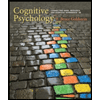 Cognitive PsychologyPsychologyISBN:9781337408271Author:Goldstein, E. Bruce.Publisher:Cengage Learning,
Cognitive PsychologyPsychologyISBN:9781337408271Author:Goldstein, E. Bruce.Publisher:Cengage Learning,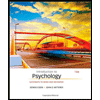 Introduction to Psychology: Gateways to Mind and ...PsychologyISBN:9781337565691Author:Dennis Coon, John O. Mitterer, Tanya S. MartiniPublisher:Cengage Learning
Introduction to Psychology: Gateways to Mind and ...PsychologyISBN:9781337565691Author:Dennis Coon, John O. Mitterer, Tanya S. MartiniPublisher:Cengage Learning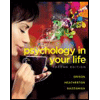 Psychology in Your Life (Second Edition)PsychologyISBN:9780393265156Author:Sarah Grison, Michael GazzanigaPublisher:W. W. Norton & Company
Psychology in Your Life (Second Edition)PsychologyISBN:9780393265156Author:Sarah Grison, Michael GazzanigaPublisher:W. W. Norton & Company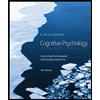 Cognitive Psychology: Connecting Mind, Research a...PsychologyISBN:9781285763880Author:E. Bruce GoldsteinPublisher:Cengage Learning
Cognitive Psychology: Connecting Mind, Research a...PsychologyISBN:9781285763880Author:E. Bruce GoldsteinPublisher:Cengage Learning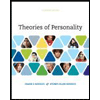 Theories of Personality (MindTap Course List)PsychologyISBN:9781305652958Author:Duane P. Schultz, Sydney Ellen SchultzPublisher:Cengage Learning
Theories of Personality (MindTap Course List)PsychologyISBN:9781305652958Author:Duane P. Schultz, Sydney Ellen SchultzPublisher:Cengage Learning





